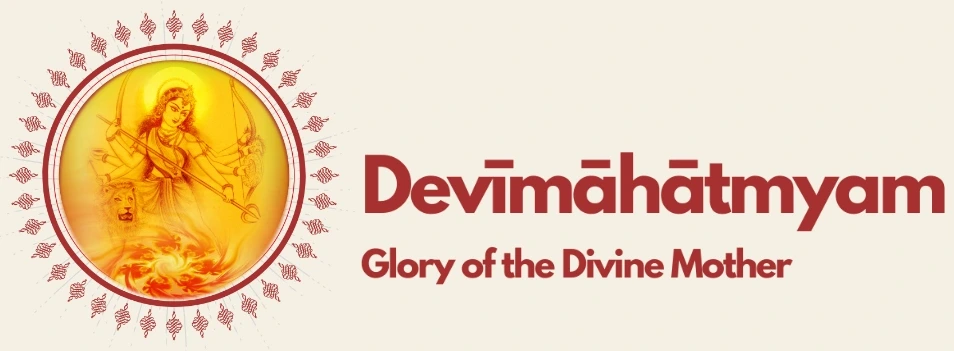Kavaca, Argalā, Kīlakam
The physical body is obscure and obstinate and prone to ailments. It is not plastic and supple like the vital or the mind. Because of its innate inertia, it is considered an impediment to spiritual progress and there are many spiritual paths that advocate a total ignoring or suppression of the physical. But that is not the way of the Tantra. The body is the basis of the sādhanā, the receptacle for the play of the Divine. It has to be enlightened and made to share the experiences and progress in the mental and the vital. It has to be made strong to resist the onslaughts of the forces that stand in the way of such a change. The body has to be guarded and protected and the physical envelope surrounding it made strong so that these forces do not make inroads into it and attack the body in the form of illness. The device used by the sādhaka is the kavaca, a prayer acting as an armour effectuating the divine protection. The kavaca is used to guard and protect the body, ward off illness from it and cure it from illness when it has already besieged the body. It ensures the proper distribution and operation of forces in the very cells of the body, piṇḍāṇḍa, in consonance and harmony with the operation of the Divine Law in the Cosmos, ’ brahmāṇḍa and sets right all discord.
The prayer for protection is made to the pradhāna, principal deity and the pārivāras, the subsidiary deities, that form the retinue of the principal deity. The sādhaka spells out the parts of the body to be protected, limb by limb, part by part, and assigns them to the protection of a particular deity. Thus the entire body is left to the care and protection of the principal and subsidiary deities. Thus fortified, the sādhaka pursues his Sādhanā.
Apart from other deities, the kavaca makes mention of the nine Durgas who compose the principal deity Chaṇḍika whose sound - form is famous as the nine-lettered Mantra, Navākṣarī. A study of these significant names will be of help to the earnest seeker. The first name is Śailaputrī, the daughter of the mountain. The mountain is the symbol of our conscious existence with serried levels and peaks, sānūni. In this she takes birth, in the rock, in the hard core of inconscient Matter. At the same time, she is Brahmacāriṇī, moving and having her existence in the Brahman, in the conscious Word, in the supreme Nāda which creates the whole existence. The one who creates as the Word enters and takes birth in her creation, in its hardest inconscient core. She is the Nāda that spreads the Delight, the sustaining sap, rasa, of existence, Candraghaṇṭā. She is not merely Ānanda, the delight in the supernal ether Ākāśa, she is the incubating Tapas, the fertile seed put into the earth, Kūṣmāṇḍa.1 She is Skanda-mātā, the mother of Skanda. Skanda represents the descent of divine energy on earth.
1. Kūṣmāṇḍa is derived from Ku earth, Uṣma heat, tapas and Aṇḍa egg, seed.
Though firmly stationed in the supernal place, he slips down, Skanna, as Kumāra, the son of God to uplift humanity.¹ The Goddess is not only the mother of the worlds, she is also the mother of Divine Descents, Avatāras who come to uplift humanity towards divinity. And yet she is Kātyāyanī, the eternal Virgin.2 She is Kālaratri, the dark night carrying the luminous possibilities in her womb and she is Mahāgaurī the great Radiance, the bright day of light and knowledge. Finally, she is Siddhidātrī, the bestower of Siddhi, the one who grants and fulfills the yearning of the created towards its creator. Thus, the nine Durgas enumerated are Śailaputrī, Brahmacāriṇī, Candraghaṇṭā, Kuṣmāṇḍa, Skandamātā, Kātyāyanī, Kālaratri, Mahā gaurī and Siddhidātri.3
1. न च्युतोऽपि परमान्निजधाम्नः
स्कन्द इत्यभिधया व्यवहारः।
स्कन्नमेव दनुजानपहन्तुं
देवकार्यकलितं स हि तेजः॥
- Sri Kapali Sastriar in Kumārastava
2. The Purāna speaks of the goddess as the adopted daughter of the seer Kātyayana and thus explains the name.
The Vedic Gayatrī of Durgā Katyāyanī invokes her as the eternal virgin, Kanyā Kumarī.
कात्यायनाय विद्महे कन्याकुमारी धीमहि।
तन्नो दुर्गिः प्रचोदयात्॥
3. Some Tantras enumerates the names of the nine Durgās as the Vanadurgā, Jaladurgā, Agnidurgā, Sthaladurgā, Viṣṇudugā, Brahmadurgā, Rudradurgā, Mahādurgā and Śālinidurgā.
Argalā means a bolt and a knowledge of its existence is necessary to open the closed door. A reading of the Argalā Stotra is considered essential for opening up the secrets sealed in Saptaśati. The verses of the stotra have a refrain, rūpaṁ dehi, jayaṁ dehi, yaṣo dehi, dviṣo jahi which has been translated thus:“Give the form, give the victory, give the fame, kill the enemies.”
Rūpaṁ means form, the svarūpa, the true form of oneself,1 the distinct self of the individual which we would call his psychic being. The Divine is in all living beings, but each being has its own distinct divine element which is special to it and which is its true form. “It is the soul or spark of the Divine Fire supporting the individual evolution on the earth"2 and the whole sādhanā is to get in touch with the true form of oneself, rūpam, and act from there. Only then will an individual being evolve as he should evolve, as per his rūpam, distinct form in this world of names and forms.
1. ‘Ātmā hi nāma svarūpam’- Achasrya Sankara in Brahmasūtra Bhāṣya.
2. Sri Aurobindo

